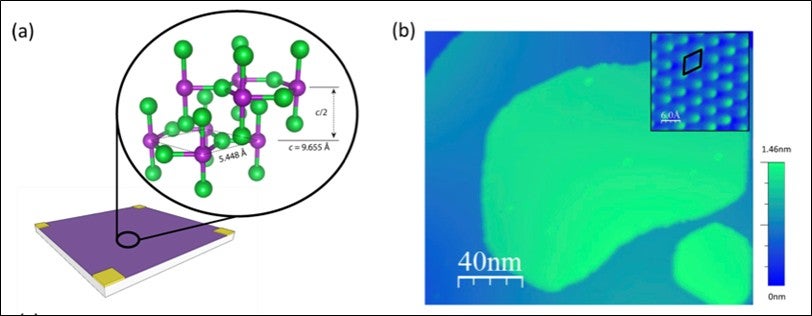A new class of materials
Adam SHAFFIQUE (Group Leader, Physics) () August 22, 201622 Aug 2016. NUS physicists and collaborators have developed ultra-thin films of a new class of materials: Weyl semi-metals.
A collaboration between the theory group led by Prof Adam SHAFFIQUE from the Department of Physics at NUS and the experimental group of Prof Michael FUHRER from Monash University produced, for the first time, ultra-thin films of an exciting new class of materials known as Weyl semi-metals. This allows for the verification of its unique electronic properties with theoretical predictions [1].
A Weyl semi-metal is the three-dimensional analogue of graphene. Unlike the usual Schrödinger electrons, where the electron velocity increases with energy, graphene electrons move with a large constant velocity in a two-dimensional plane. For Weyl semi-metals, the electrons move with constant velocity in all three dimensions. These electrons also exhibit a property called “topological band-structure” which makes them more immune to dirt and other imperfections and gives rise to unusual material properties in the presence of magnetic fields.
The newfound ability to grow crystals of this material and control their electronic properties opens up new possibilities for future technological applications. For example, manipulating the topological property of such materials using electric or magnetic fields can create low-power “topological transistors” that could potentially replace conventional transistors that dissipate large amounts of heat. Theoretical predictions have shown that by bringing Weyl electrons close to a superconductor, they host zero-energy states. These Majoranna modes store topological information which can be used to build a quantum computer that is protected from environmental noise.
Prof Shaffique explained that these Na3Bi samples are sufficiently thin to allow one to change the number of electrons in the film using a back gate. This achievement allows them to analyse and verify the data against theoretical predictions for the conductivity of Weyl semi-metals in the presence of magnetic fields.
Previous theoretical work [2] already predicted that the same mechanism that produces magnetoresistance (a change in electrical resistance due to magnetic fields) in graphene should also be present in Weyl semi-metals. The current experiment validated some of those theoretical ideas, but also raised new questions on the how topological electrons move around in this new class of materials.

Figure shows: (a) 20 nm thick sodium bismuth films that were grown and used in this experiment. The crystal structure is shown in the inset. (b) STM images of the thin film show the morphology (main figure) and the atomic scale image of the surface of this material. [Image credit: Jack HELLERSTEDT, Monash University].
References
[1] J. Hellerstedt et al. “Electronic properties of high-quality epitaxial topological dirac semimetal thin films”. Nano Letters 16 3210 (2016). DOI: 10.1021/acs.nanolett.6b00638.
[2] N. Ramakrishnan et al. “Transport and magnetotransport in three-dimensional Weyl semimetals”. Phys. Rev. B 92, 245120 (2015). DOI: 10.1103/PhysRevB.92.245120.


